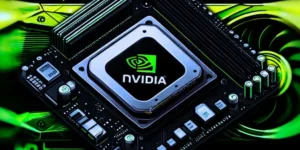Most people focus on performance, cooling, and aesthetics when building a PC, but cable management is often overlooked. However, proper cable organization is more than just about looks. It plays a significant role in airflow, maintenance, and overall system stability. Whether you’re a beginner or an experienced builder, mastering cable management is a crucial skill that improves functionality and aesthetics in any build.
Improving Airflow and Cooling Efficiency
One of the most important reasons for good cable management is its impact on airflow. Messy cables block air pathways, leading to higher temperatures and reduced cooling efficiency. By routing cables neatly and keeping them out of airflow channels, fans can operate more effectively, ensuring critical components like the CPU and GPU stay cooler. Reducing thermal stress can even extend the lifespan of hardware.
Easier Maintenance and Upgrades
A well-organized system is much easier to clean, troubleshoot, and upgrade. Poorly managed cables create a tangled mess, making swapping components or performing routine maintenance difficult. When cables are neatly routed, identifying and replacing parts—like upgrading RAM or installing a new GPU becomes much simpler and less time-consuming. This is especially important for builders who frequently modify their setups.
Enhancing Aesthetics and Presentation
For many PC builders, a clean, well-managed build is just as satisfying as high-performance specs. Tempered glass cases and RGB lighting look far better when clutter is minimized. Organized cables give a professional appearance, making the system visually appealing, whether it’s for personal use, streaming setups, or showcasing builds online. Many enthusiasts consider cable management art, taking pride in achieving a clean, symmetrical layout.
Reducing Electrical and Hardware Risks
Messy cables aren’t just an eyesore. They can pose real risks. If wires are pinched or improperly placed, poor cable routing can lead to connector strain, accidental disconnections, or even short circuits. Well-managed cables reduce wear and tear on connectors and prevent unnecessary stress on power supplies, ensuring a safer and more reliable system in the long run.
Conclusion
Cable management is more than just a cosmetic improvement. It’s a crucial skill that affects cooling, maintenance, and overall system longevity. A well-organized build looks clean and professional, ensuring better airflow, easier upgrades, and reduced hardware risks. Whether you’re a first-time builder or a seasoned enthusiast, properly managing cables is a skill that will pay off in performance, aesthetics, and longevity.










